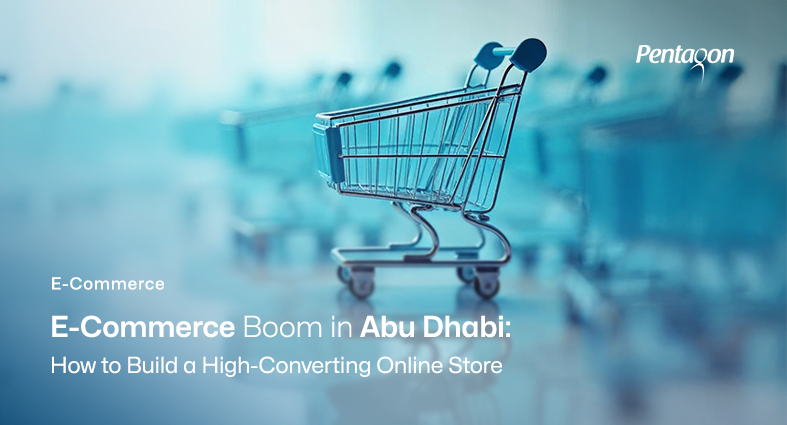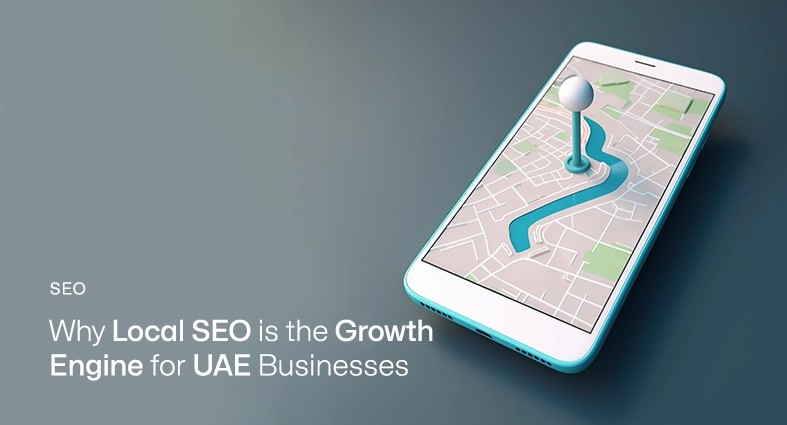Ecommerce is a thriving industry, with countless businesses vying for the attention of online shoppers. In this highly competitive landscape, having a well-optimized website is the key to standing out and achieving success. In this article, we will explore the most potent SEO strategies tailored specifically for ecommerce websites, empowering you to drive organic traffic, boost sales, and rise above the competition. From effective keyword research and on-page optimization to mobile-friendly design and user experience enhancement, this guide will equip you with the essential tools to harness the full potential of ecommerce SEO and establish a strong online presence. Let’s embark on this journey to unlock the secrets of SEO domination and take your ecommerce business to new heights of organic growth and success.
Importance of SEO for Ecommerce Success
- Increased Visibility: SEO (Search Engine Optimization) plays a crucial role in enhancing the visibility of your ecommerce website in search engine results. When potential customers search for products or services you offer, a well-optimized website is more likely to appear at the top of search results, increasing the chances of attracting organic traffic.
- Targeted Traffic: Unlike traditional advertising methods, SEO allows you to target specific keywords and phrases that are relevant to your products or services. By optimizing your website for these keywords, you can attract highly targeted traffic of potential customers actively seeking what you offer.
- Credibility and Trust: High-ranking websites in search results are often perceived as more credible and trustworthy by users. When your ecommerce website ranks well, it instills confidence in your brand and products, leading to higher click-through rates and increased conversions.
- Competitive Advantage: In the highly competitive ecommerce landscape, SEO can give your business a competitive edge. By outperforming competitors in search engine rankings, you can position your brand as a top choice for potential customers.
Keyword Research and Targeting
Keyword research and targeting form the cornerstone of a successful ecommerce SEO strategy. It involves conducting in-depth analysis and understanding the search behavior of your target audience, allowing you to identify the most relevant and high-converting keywords for your product pages. This knowledge enables you to tailor your content and product offerings to meet their specific requirements, improving the chances of attracting qualified leads and increasing conversions. Without proper keyword research, your ecommerce website may miss out on valuable opportunities to rank higher in search engine results and connect with potential customers who are actively searching for products or services you offer.
Identifying High-Converting and Relevant Keywords
Identifying high-converting and relevant keywords is the key to driving targeted traffic to your product pages. Focus on keywords that have a proven track record of leading to conversions, indicating that users who search for these terms are more likely to make a purchase. In addition, relevance is crucial in selecting keywords that directly relate to your products or services.
Implementing Long-Tail Keywords
Long-tail keywords consist of longer and more specific phrases that users often search for when they have a clear intention or specific need. While they may have lower search volume compared to broader keywords, they often yield higher conversion rates. Implementing long-tail keywords allows you to target a niche audience that is further along the buying journey, indicating their intent to make a purchase.
Utilizing Keyword Variations and Synonyms
Incorporating keyword variations and synonyms in your content provides comprehensive coverage of relevant search queries. Users may use different terms to search for products or services, and by including various keyword variations, you increase the chances of capturing a wider audience. Search engines also recognize related terms and synonyms, allowing your content to rank for a broader range of search queries. This approach not only expands your reach but also enhances the overall relevance and authority of your website, signaling to search engines that your content is a valuable resource for users seeking information on a particular topic or product category. As a result, your ecommerce website gains better visibility in search results, driving organic traffic from a diverse range of relevant keywords.
High-Quality and Unique Content
Creating content that engages and resonates with your target audience can significantly impact your website’s visibility, customer trust, and overall conversion rates. Engaging and informative content is crucial for captivating your website visitors and encouraging them to explore your products further. Your content should not only be visually appealing but also provide valuable information that helps potential customers make informed decisions. Product descriptions should be persuasive and highlight the unique selling points of each item, while blog posts and articles should address customer pain points, provide solutions, and showcase your expertise in the industry. Let’s delve deeper into the key aspects of high-quality and unique content for ecommerce websites.
Leveraging Content Marketing
Content marketing plays a vital role in attracting and retaining customers in the world of ecommerce. By consistently producing valuable and relevant content, you can position your brand as an authority in your niche, creating a loyal following of customers who seek out your expertise. Content marketing efforts can include regular blog posts, informative guides, how-to videos, and social media posts that showcase your products and offer useful tips and insights. This not only drives organic traffic to your website but also nurtures relationships with your existing customers, encouraging repeat purchases and building brand advocacy.
Incorporating Product Reviews, UGC, and FAQs
Incorporating user-generated content (UGC) and product reviews into your ecommerce website can significantly impact customer trust and conversion rates. Genuine reviews and testimonials from satisfied customers act as social proof, assuring potential buyers of the quality and reliability of your products. Encouraging customers to leave reviews and share their experiences also creates a sense of community around your brand. Additionally, implementing a comprehensive FAQ section can address common customer queries and concerns, streamlining the purchasing process and improving the overall user experience.
Using Multimedia Content
Multimedia content, such as images, videos, and interactive elements, can elevate the user experience on your ecommerce website. High-quality product images that showcase your offerings from multiple angles help potential customers visualize the product and make more informed choices. Product demonstration videos provide a deeper understanding of how the product works and its features. Furthermore, interactive elements, such as 360-degree product views or augmented reality experiences, can further engage users and increase their confidence in making a purchase.
Mobile-Friendly and Responsive Design
Mobile-friendliness is a crucial ranking factor for search engines like Google. In 2015, Google introduced mobile-first indexing, which means that the search engine primarily uses the mobile version of a website’s content to index and rank pages. This shift was a response to the growing trend of users accessing the internet on mobile devices. Having a mobile-friendly website is not only vital for search engine rankings but also user experience. A mobile-friendly website adapts to different screen sizes, ensuring that content is easily accessible and readable on smaller screens. This, in turn, leads to improved user satisfaction and a higher likelihood of visitors staying on your site and converting into customers.
Implementing Responsive Design
Responsive design is a web design approach that allows a website to automatically adjust its layout and content based on the device the user is using. Whether visitors access your ecommerce site on a desktop computer, smartphone, tablet, or any other device, a responsive design ensures that the website looks and functions optimally. Implementing responsive design eliminates the need for separate mobile versions of your site, making it easier to manage and maintain. Additionally, responsive design ensures consistent branding and user experience across all devices, reinforcing your brand identity and building trust with your audience.
Optimizing Page Load Speed
Mobile users, in particular, expect fast-loading pages to quickly find the information they need. According to studies, a significant number of users abandon websites that take too long to load on their mobile devices. To optimize page load speed for mobile users, consider compressing images and files, minimizing HTTP requests, and leveraging browser caching. Conduct regular speed tests and optimizations to ensure that your ecommerce site loads swiftly on various devices and across different internet connections.
Utilizing Accelerated Mobile Pages (AMP)
Accelerated Mobile Pages (AMP) is an open-source initiative by Google and other technology companies designed to provide faster-loading mobile web pages. AMP optimizes HTML, CSS, and JavaScript to reduce page load times significantly. These stripped-down versions of web pages are delivered from Google’s servers, ensuring rapid load times even on slow internet connections. Implementing AMP for your ecommerce website can lead to enhanced mobile user experience, reduced bounce rates, and increased time spent on site. Additionally, AMP pages often receive favorable treatment in Google’s search results, potentially leading to improved visibility and higher click-through rates for your content.
Ecommerce Site Structure and Navigation
A well-organized site structure and intuitive navigation are essential elements of a successful ecommerce website. A clear and logical organization of products into relevant categories and subcategories not only helps users find what they are looking for easily but also enhances search engine visibility. Let’s delve into the key aspects of ecommerce site structure and navigation:
Organizing products into Relevant Categories and Subcategories
When designing an ecommerce website, it is crucial to group products into meaningful and relevant categories and subcategories. This hierarchical organization not only aids users in quickly locating desired products but also helps search engines understand the relationship between different product pages.
Implementing Breadcrumb navigation
Breadcrumb navigation is an invaluable feature that provides users with a trail of links showing their current location within the website’s hierarchy. These breadcrumbs appear at the top of the product page and display the path users have taken to arrive at the current page. Breadcrumbs not only simplify the user’s navigation journey by allowing them to backtrack to previous pages easily but also improve the overall user experience and reduce the bounce rate.
Optimizing Site Architecture
An optimized site architecture is not only beneficial for users but also for search engine crawlers. A well-structured website with clear hierarchies and internal linking helps search engine bots crawl and index your pages more effectively. By providing a seamless and organized structure, you enable search engines to understand the relationships between different pages and identify the most important and relevant content, leading to better search engine rankings and visibility.
Utilizing Site Search Functionality
Implementing a site search functionality allows users to find specific products quickly and efficiently. Site search is especially useful for ecommerce websites with a vast inventory. By offering a prominent and user-friendly search bar, users can input keywords and find exactly what they are looking for without the need to navigate through multiple categories. This not only improves the user experience but also increases the chances of conversions as customers can easily find and purchase the products they desire.
User Experience and Conversion Rate Optimization
User experience is a significant factor that influences your website’s search engine rankings and conversion rates. A positive user experience signals to search engines that your website is relevant and valuable to users, thereby improving its search engine visibility. Moreover, a satisfying user experience keeps visitors on your site for longer periods, reducing bounce rates and increasing the likelihood of conversions. Let’s explore the critical aspects of user experience and conversion rate optimization for ecommerce websites:
Optimizing Checkout Process
The checkout process is a critical juncture in the customer journey, and any obstacles or complexities may lead to cart abandonment. To optimize the checkout process, streamline the steps involved, and make it as simple and intuitive as possible. Implement a progress indicator to show customers where they are in the checkout process, and provide a clear call to action for each step. Furthermore, offer multiple secure payment options, and ensure that the checkout page is mobile-friendly for customers who prefer to shop on their smartphones or tablets.
Reducing Cart Abandonment
Cart abandonment is a common challenge for ecommerce websites, but it can be mitigated through user-friendly design and strategic placement of elements. Provide a clear and easily accessible view of the shopping cart and its contents throughout the website. Additionally, offer a wishlist or save-for-later option, allowing customers to revisit their chosen products at a later time. Implementing exit-intent pop-ups or follow-up emails with personalized offers can also encourage customers to complete their purchases, reducing cart abandonment rates.
Conducting A/B tests
Conducting A/B tests is a valuable technique for optimizing your ecommerce website’s performance and conversion rates. By creating different variations of specific elements, such as call-to-action buttons, product images, or page layouts, you can analyze which version performs better with real users. A/B testing allows you to make data-driven decisions and continually refine your website to enhance user experience and increase conversion rates. Through regular testing and analysis, you can identify areas for improvement and make incremental changes that have a significant impact on your ecommerce success.
Ecommerce SEO and Social Media Integration
Social media has become an integral part of our daily lives, and its impact on businesses, including ecommerce, is undeniable. Now we will explore how you can seamlessly integrate social media into your ecommerce SEO strategy to maximize your online presence and boost your brand exposure.
Integrating Social Media Sharing Buttons
By allowing users to easily share their favorite products with their social networks, you can leverage the power of social sharing to expand your brand reach. When customers share your products with their friends and followers, it can lead to increased traffic to your website and potential new customers. Additionally, social sharing signals are considered a ranking factor by search engines, contributing to improved visibility and higher search rankings.
Link Building and Brand Exposure
Social media platforms offer excellent opportunities for link-building and brand exposure. Actively sharing your website’s content and products on social media channels can attract the attention of influencers and industry experts, who may then link back to your website or share your content with their followers. Building relationships with influencers can lead to valuable backlinks and increased brand exposure to a broader audience. Social media platforms also provide an avenue for engaging with your audience directly, responding to customer inquiries, and nurturing a community of loyal customers.
Using Social Media Analytics
Analyzing key metrics such as engagement, reach, and click-through rates, you can gain a deeper understanding of what content resonates most with your audience and which social media channels are most effective for driving traffic and conversions. These insights can then be used to tailor your content and marketing efforts to maximize their impact on SEO and overall business performance.
Link Building for Ecommerce Websites
Link building remains a crucial aspect of SEO, and for ecommerce websites, acquiring high-quality backlinks is paramount to improving search rankings and organic traffic. When reputable and relevant websites link back to your ecommerce site, it demonstrates that your content and products are valuable and trustworthy, leading to higher search rankings. However, it’s essential to focus on obtaining links from authoritative and reputable sources, as low-quality or spammy backlinks can have a negative impact on your SEO efforts. Let’s delve into the significance of link building for ecommerce SEO and explore effective strategies to build a robust backlink profile.
Conducting Competitor Analysis
Analyzing the backlink profiles of your competitors can offer valuable insights into potential link-building opportunities for your ecommerce website. Identify the websites that are linking to your competitors and assess whether these sources are relevant to your niche. Outreach to these websites with valuable content or products that align with their audience’s interests can help secure quality backlinks and drive traffic to your website.
Guest Blogging and Content Partnerships
Guest blogging is an effective strategy for acquiring backlinks and establishing your brand as an authority in your industry. Reach out to reputable blogs and websites within your niche and offer to contribute valuable content in exchange for a backlink to your ecommerce site. Collaborating with industry influencers and content partners can also lead to link-building opportunities, as they share your content with their followers and link back to your website.
Influencers and Industry Experts
Influencer marketing can be a powerful tool for ecommerce link-building. Identifying influencers within your industry or niche and building relationships with them can lead to valuable backlinks and increased brand exposure. Influencers can endorse your products, review your offerings, or feature them in their content, providing valuable backlinks and social proof that can drive traffic and sales to your ecommerce site.
Monitoring and Analytics
SEO monitoring and analytics serve as the backbone of any successful ecommerce SEO strategy. Regularly monitoring key performance indicators (KPIs) and analyzing data allows businesses to gauge the effectiveness of their SEO efforts and identify areas that require attention. By understanding how various SEO elements impact website traffic, user behavior, and conversions, ecommerce businesses can continuously refine their strategies and stay ahead of the competition.
Google Analytics
Google Analytics is a powerful and widely-used tool for tracking and analyzing website data. It provides valuable insights into user behavior, traffic sources, and conversions, making it an indispensable resource for ecommerce businesses. By setting up Google Analytics on their website, businesses can track crucial KPIs such as organic traffic, bounce rates, time on page, and conversion rates. This data enables them to assess the effectiveness of their SEO efforts and make informed decisions to optimize their website for better performance.
Implementing Goal Tracking
Goal tracking is an essential aspect of ecommerce analytics, as it allows businesses to measure specific actions or conversions on their website. By setting up goals in Google Analytics, such as completed purchases or newsletter sign-ups, businesses can track the success of their SEO strategies in driving desired actions. Ecommerce businesses can also set up e-commerce tracking, which provides valuable data on revenue, transaction details, and product performance. With comprehensive goal tracking, businesses can measure the success of their SEO efforts in terms of actual conversions and revenue generation.
Utilizing SEO Tools
In addition to Google Analytics, there are various SEO tools available that can provide deeper insights into keyword performance and competitor analysis. These tools allow businesses to track keyword rankings, identify high-performing keywords, and discover new keyword opportunities to target. By understanding which keywords are driving the most traffic and conversions, ecommerce businesses can refine their content and optimization strategies to attract more relevant visitors. Moreover, competitor analysis tools help businesses understand their competitors’ SEO strategies, allowing them to identify strengths and weaknesses and adjust their tactics accordingly.
Conclusion
Mastering the art of SEO domination in the realm of ecommerce is a crucial pursuit for businesses aiming to thrive and excel in the competitive digital landscape. By implementing a comprehensive array of effective SEO strategies, ecommerce websites can attract organic traffic, elevate their search engine rankings, and ultimately drive higher sales and conversions. Seize the opportunity to conquer the digital marketplace and unlock the full potential of your ecommerce ventures through the power of SEO domination. Ready to Boost Your Ecommerce Success? Get Started with Our Expert Ecommerce Development Services Today! Boost Sales, Enhance User Experience, and Dominate Your Market. Contact Us Now!
services
Feel free to send us a message.
Please, share your thoughts, and let's chat over a cup of tea.



















